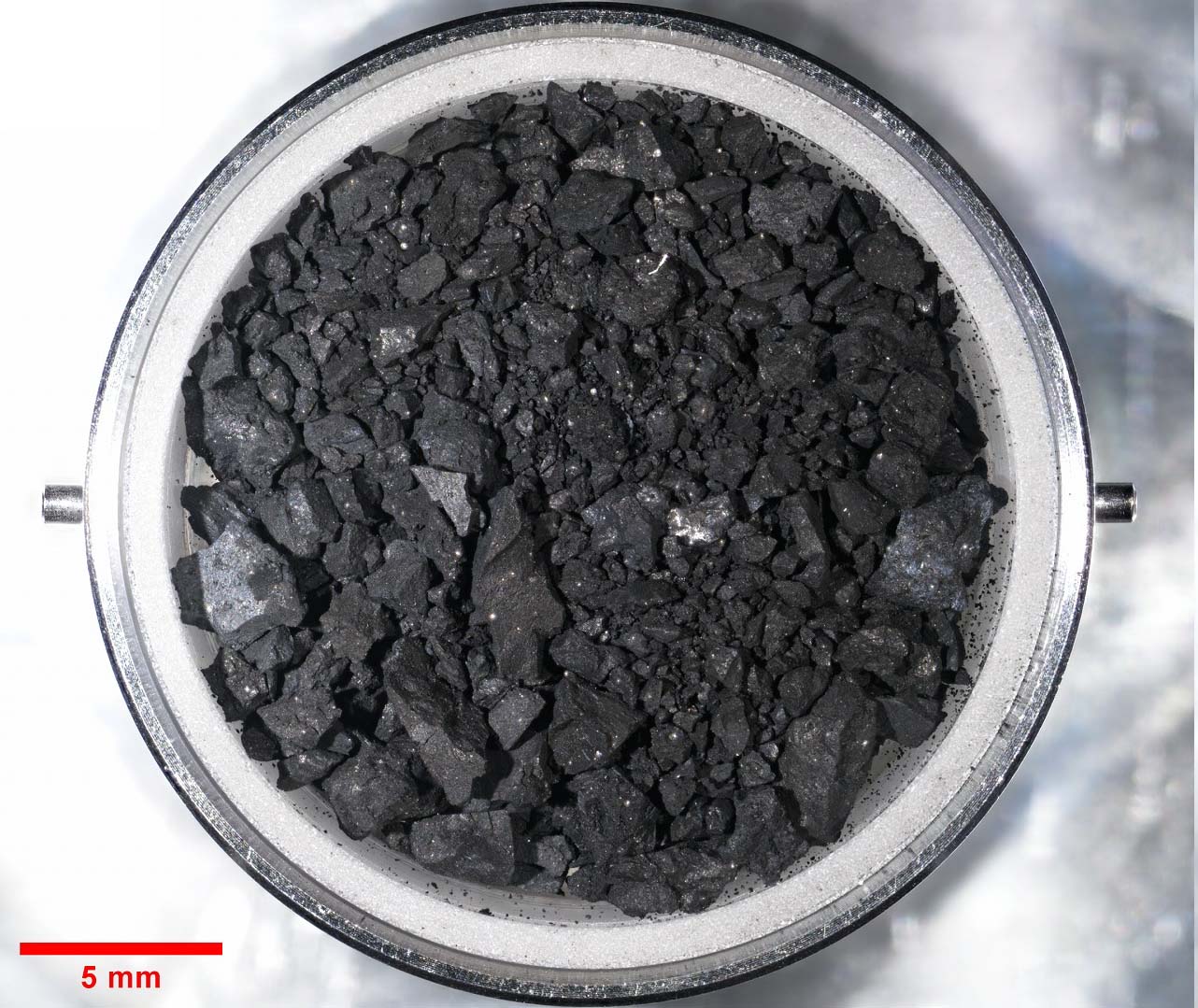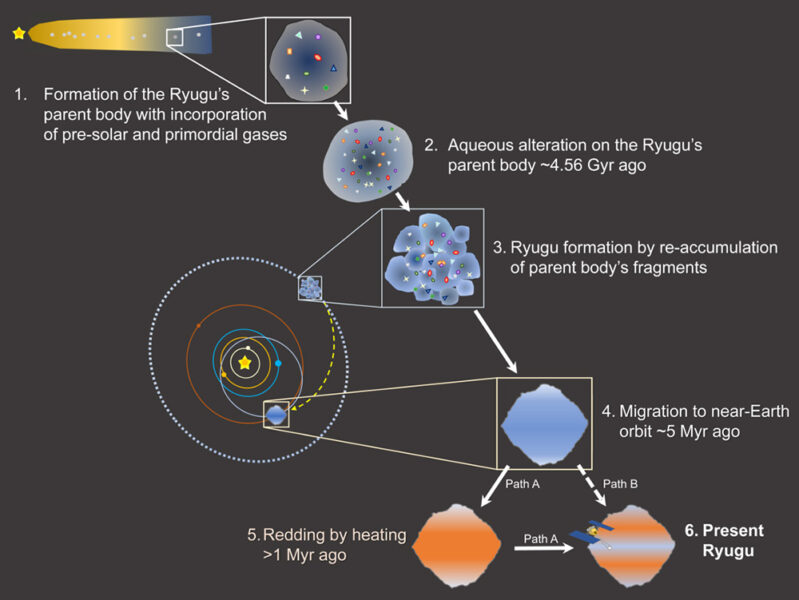Analyses of just 5.4 grams scooped from the asteroid Ryugu are delivering rich new insights into the history of the solar system.

JAXA
Analyses of samples weighing just 5.4 grams scooped from asteroid 162173 Ryugu are delivering a rich haul of new insights into asteroids and the history of the solar system.
The grains appear similar to a rare, fragile type of rock that rarely make it to Earth in the form of meteorites. The finding indicate this type of asteroid may be much more common in space than on the ground. What’s more, this type of asteroid seems to have formed in the outer solar system, suggesting Ryugu made a long journey to where it is now, in an Earth-crossing orbit that earns it the designation, “potentially hazardous.”
What the Samples Say
The Japan Aerospace Exploration Agency (JAXA) chose the diamond-shaped Ryugu as a target for its Hayabusa 2 sample-return mission. Observations from the probe, after it reached the asteroid in June 2018, revealed the asteroid to be a porous rubble pile — about half its volume is empty space.

Yada et al. / Nature Astronomy 2021
Hayabusa 2 scooped samples from the surface and from a probe-made crater, then delivered those samples to Earth in December 2020. Early studies found they contain the most primitive material known in the solar system. JAXA then distributed small parts of the samples to scientists around the world for comprehensive analysis down to the level of individual grains. Those studies are now coming out.
The new analyses compared abundances of different isotopes — atoms of the same element but with different numbers of neutrons. They found that the mixture of iron isotopes in the samples is indistinguishable from that of CI carbonaceous chondrite meteorites. This type of meteorite is likely primordial, surviving unchanged through the development of the solar system, but it’s also rare. Only a few examples have survived the fall to Earth, such as the Ivuna meteorite found in Tanzania in 1938.
What makes the primordial material found on Ryugu rare on the ground is its fragility, says Nicolas Dauphas (University of Chicago), coauthor of the study published in the October 20th Science Advances. “Meteorites of the CI type are very friable and fragile . . . so would have been vaporized in the atmosphere or not recognized as meteorites on the ground [because moisture turns them into unrecognizable mud].”

©Okazaki et al., 2022
CI carbonaceous chondrites have an isotopic signature closer to that of the original solar nebula that gave birth to the planets, and maybe even from before then. A separate analysis of the abundance and isotopic composition of noble gases and nitrogen in the Ryugu sample was published in the October 20th Science. Ryuji Okazaki (Kyushu University, Japan), who led that effort, says the asteroid’s samples show extremely primitive material, such as might be found beyond the solar nebula — in-between stars. An unprecedentedly large fraction of the grains trapped gases with isotopic signatures consistent with having formed around red giants or in supernovae and then delivered to interstellar space.
That analysis also showed traces of gaseous isotopes produced via irradiation by cosmic rays and bombardment by the solar wind. From that evidence, Okazaki's group concludes that Ryugu's much-larger parent body formed in the outer part of the solar system. After an impact shattered the parent body, some of the original pieces re-accumulated into what is now Ryugu. The asteroid spent some time in the main asteroid belt, where galactic cosmic rays left their fingerprints. Only about 3 to 8 million years ago did the asteroid began migrating into its current near-Earth orbit, where it collected more material from the solar wind.
Origins
Scientists think that in the early years of the solar system, Jupiter and Saturn gravitationally scattered material in the protoplanetary disk in two directions — material scattered inward became non-carbonaceous chondrites while stuff scattered outward became carbonaceous chondrites. Some had suspected a third group containing primitive material from the outer solar system might exist, but there had been no need for it before Ryugu. With the discovery of the isotopic signature of primordial material in the solid part of the Ryugu samples, Dauphas says, “you can say there clearly is another group.”
Dauphas believes the third group originated farther from the Sun, as the ice giants Uranus and Neptune flung material away from their orbits. Some objects went outward to the Oort cloud while others went inward, though this group would have remained outside the main asteroid belt.
Because the material in the third group stayed farther from the Sun than what was scattered inward from Jupiter and Saturn, it remained more fragile than material close to the Sun, and was thus less likely to to survive falling to the ground as a meteorite. That would make CI chondrites much more common among asteroids than among meteorites — and that would make asteroids likely to be the most accessible source of the most primordial material in the solar system.
 1
1









Comments
Lou
October 26, 2022 at 1:43 am
I see no mention of comet-like behavior - does this latest result contradict the idea that Ryugu is a CAT (Comet-Asteroid Transition object)?
You must be logged in to post a comment.
You must be logged in to post a comment.